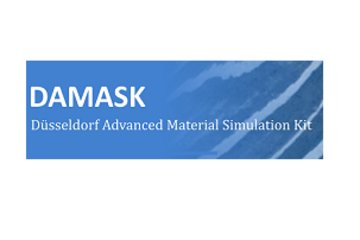All genres
301.
Talk
Suppressing the selective oxidation during the recrystallization annealing of steel band for improved hot dip galvanizing: Laboratory study. ISHOC2014 - International Symposium on High-temperature Oxidation and Corrosion 2014, Hakodate, Hokkaido Japan (2014)
302.
Talk
Near Ambient Pressure XPS studies on the oxide formation on Fe–2Mn during thermal treatment. ISHOC2014 - International Symposium on High-temperature Oxidation and Corrosion 2014, Hakodate, Hokkaido Japan (2014)
303.
Talk
Using Scanning Kelvin Probe Force Microscopy and Thermal Desorption for Localized Hydrogen Detection and Quantification in Steels. 2nd International Conference on hydrogen in Steels, Gent, Belgium (2014)
304.
Talk
Nanostructure Manipulation by Segregation Engineering. 2nd ESISM International Workshop on Fundamental Issues of Structural Materials, Kyoto, Japan (2014)
305.
Talk
Hydrogen embrittlement and traps structure of advanced high strength sheet steel for automotive applications. ICH2P-2014, International Conference on Hydrogen Production, Fukuoka, Japan. (2014)
306.
Talk
Cyclodextrins for corrosion protection. Gordon Research Conference-Aqueous Corrosion, New London, NH, USA (2014)
307.
Talk
Cyclodextrins for corrosion protection. Gordon Research Seminar-Aqueous Corrosion, New London, NH, USA (2014)
308.
Talk
Scanning Kelvin Probe Force Microscopy as Tool for the Investigation of Localized Corrosion. 2014 ECS and SMEQ Joint Internat. Meeting, Cancun, Mexico (2014)
309.
Talk
Self-Healing Coatings for Corrosion Protection: A Critical Overview and Latest Results. BASF Corrosion Workshop, Ludwigshafen, Germany (2014)
310.
Talk
General corrosion mechanisms: Protection by organic coatings and novel intelligent pigments. Axalta Innovation Symposium, Düsseldorf, Germany (2014)
311.
Talk
Self-Healing Coatings for Corrosion Protection: A Critical Overview and Latest Results. Gordon Reserach Conference on Aqueous Corrosion , New London, AR, USA (2014)
312.
Talk
Korrosionsschutz mit leitfähigen Polymeren: Entwicklung selbstheilender Beschichtungen. Materials Valley Workshop, Hanau, Germany (2014)
313.
Talk
Zinc alloy coatings for corrosion protection: From the basics to new challenges. MSE Colloquium, The Ohio State University, Columbus, Columbus, OH, USA (2014)
314.
Talk
A new technique for high-sensitive and spatially resolved detection of hydrogen and its application in corrosion science steel. Hydrogen Embrittlement Workshop, Düsseldorf, Germany (2014)
315.
Talk
Investigation of the Fundamental Processes in the Internal Oxidation of Binary and Ternary Iron Based Alloys at Elevated Temperatures. 2014 ECS and SMEQ Joint Internat. Meeting, Cancun, Mexico (2014)
316.
Talk
Controlled release of inhibitors from composite organic coatings: A “green” way of corrosion protection. EUROCORR 2013, Estoril, Portugal (2013)
317.
Talk
Active corrosion protection coatings based on potential triggered release systems. EUROCORR 2013, the European Corrosion Congress, “For a blue sky”, Estoril, Portugal (2013)
318.
Talk
Electrodeposited zinc-nanocomposite coatings and multi-component coating for smar corrosion protection. International Conference on Self-Healing Materials, Ghent, Belgium (2013)
319.
Talk
Self-Healing coatings based on electrochemical potential. International Conference on Self-Healing Materials, Ghent, Belgium (2013)
320.
Talk
Redox Repsonsive Release of Self-Healing agent for Anti-Corrosion. DFG SPP 1568 Workshop – Design and generic Principles of Self-Healing Materials, Weimar, Germany (2013)











